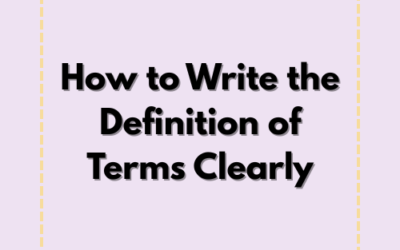Whether you’re writing a thesis, dissertation, or academic paper, one of the most crucial foundations of your research is your study’s framework. It’s like the blueprint that guides your research direction and connects all your ideas into one cohesive structure. But for many students (and even professionals), building a solid framework can feel like assembling IKEA furniture without the manual.
If you’re one of them, don’t worry. This blog breaks down the process into simple, actionable steps so you can confidently build a study framework that not only supports your research but impresses your panel, too.
I. What is a Study Framework and Why Is It Important?
A study framework provides the structure that underpins your research. There are two main types:
- Conceptual Framework – This outlines the key concepts and their relationships based on your own synthesis.
- Theoretical Framework – This uses existing theories as the lens through which your study operates.
A strong framework:
- Guides your research questions and methods.
- Clarify your variables and their relationships.
- Ensures your work is grounded in existing knowledge.
Without it, your research could feel scattered and vague.
II. Start With a Clear Research Problem
Before you can build a framework, you need a precise research problem. This acts as your starting point.
Ask yourself:
- What issue am I solving?
- Who is affected?
- What are the causes and effects?
Once you’ve nailed that down, the next step is aligning this problem with your study’s objectives. Frameworks aren’t just decorations — they must reflect your goals and the direction of your research.
🛠 Pro Tip: Use tools like mind maps or fishbone diagrams to visualize the core of your topic.
III. Dive Into Related Literature
Your framework must be rooted in relevant studies, models, and theories. Conduct a thorough review of:
- Existing theories
- Empirical studies
- Models used by researchers in your field
Look for:
- Common variables or themes
- Gaps in the current literature
- How researchers structured their frameworks
This will give you a richer context and help you avoid reinventing the wheel
IV. Select the Right Theory or Concepts
Choosing a guiding theory or concept is like selecting the right lens for a camera. It affects how you see, interpret, and analyze your research.
Questions to ask:
- Does this theory match the scope and focus of my study?
- Has it been used in similar research?
- Can it explain the relationships between my variables?
Sometimes, researchers combine theories — but do so with care. Keep it clear, relevant, and practical.
V. Define Your Variables and Show Their Relationships
At this point, your framework starts to take shape. Clearly define:
- Independent variables – The causes or predictors
- Dependent variables – The outcomes or effects
- Moderating/mediating variables – Influencers that affect the relationship
Once defined, visualize the structure. Draw arrows, boxes, and connections to show how each part interacts. This visual aid will be useful not just for you, but also for your readers and evaluators.
VI. Justify Your Framework
It’s not enough to choose a framework — you need to justify why you chose it.
In your paper, write a short paragraph explaining:
- Why you select that theory or concept
- How it relate to your research problem
- How it will guide your methodology and analysis
Sample sentence starters:
- “This framework is grounded in [Theory], which aligns with the study’s objective to explore…”
- “Based on the review of literature, the chosen variables reflect key influences found in…”
VII. Present It Like a Pro
A well-done framework deserves proper presentation. Make sure to:
- Create a clean, labeled diagram of your framework.
- Place it logically within Chapter 1 or 2 of your paper (depending on your format).
- Use concise descriptions when discussing it in your text.
Avoid clutter — clarity is key.

Stay focused, stay grounded in your objectives, and don’t be afraid to simplify.
Final Thoughts…
A strong research framework isn’t just academic fluff — it’s a critical tool that gives your study clarity, depth, and direction. When done right, it can impress reviewers, guide your methodology, and save you countless hours of confusion later.
And remember: a framework is a living part of your research. It can evolve as your study progresses. What matters most is that it’s intentional, relevant, and aligned with your goals.
✨ Need Help? We Got You.
The Writeler Co. is here to support students and professionals who are juggling research with work, life, and business. Whether you’re writing a thesis, capstone, or dissertation for your master’s or Ph.D., we help you efficiently navigate the research journey — from brainstorming to proofreading.
📩 Message us today to get started.
📚 Let’s turn your research idea into a powerful paper.





0 Comments